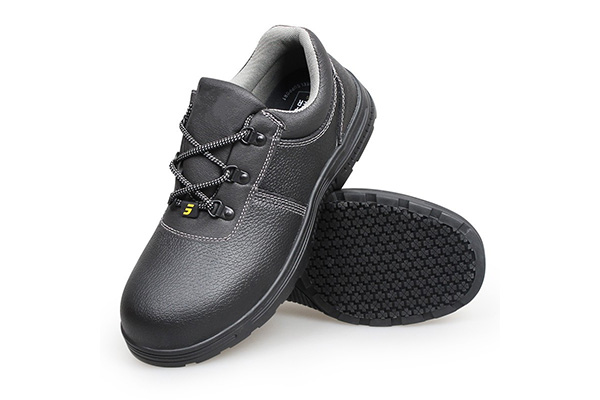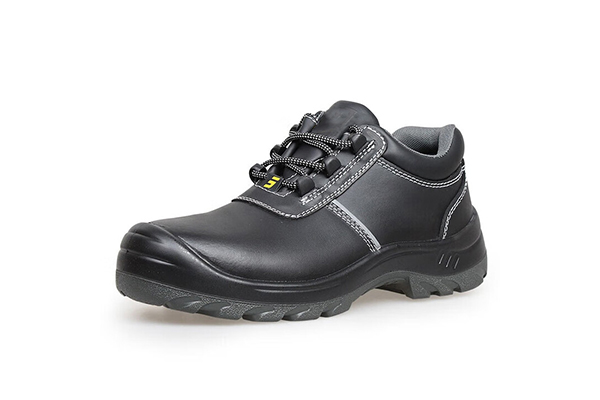What are ESD Safety Shoes? What You Need to Know
In industrial workplaces, safety is always a top priority. While helmets, gloves, and high-visibility clothing often get the spotlight, one essential piece of protective gear is often overlooked: ESD safety shoes. These specialized shoes are designed to prevent electrostatic discharge, which can cause serious damage to sensitive equipment — and even pose risks to workers.
In this article, we’ll explore what ESD safety shoes are, how they work, why they’re important, and how to choose the right pair for your workplace.
What Does ESD Mean?
ESD stands for Electrostatic Discharge — a sudden flow of electricity between two electrically charged objects. It often happens when a person builds up static electricity and then touches a conductive surface, releasing the charge.
While ESD may only feel like a small shock in everyday life, in industries such as electronics, semiconductors, pharmaceuticals, and chemical manufacturing, even a tiny discharge can:
- Damage sensitive electronic components
- Disrupt production processes
- Create sparks that could ignite flammable substances
That’s why ESD protection is critical — and why ESD footwear plays a vital role in workplace safety.

What Are ESD Safety Shoes?
ESD safety shoes are specially designed footwear that dissipates static electricity from the human body into the ground, preventing harmful electrostatic discharge.
Unlike regular work shoes, which may insulate the body and allow static charges to build up, ESD shoes are made with conductive or dissipative materials in their soles and insoles. These materials create a controlled path for static electricity to flow harmlessly into the earth.
Key Features of ESD Safety Shoes:
- Antistatic soles: Usually made of conductive rubber or polyurethane to safely discharge static.
- Electrically dissipative insoles: Help reduce body charge buildup.
- Grounding resistance: Typically between 100 kΩ and 100 MΩ (as per IEC 61340-5-1 standards).
- Additional protection: Many ESD shoes also include toe caps and slip-resistant soles for overall workplace safety.
ESD Safety Shoes vs. Antistatic Shoes
Although the terms are sometimes used interchangeably, ESD shoes and antistatic shoes are not the same:
| Feature | ESD Safety Shoes | Antistatic Shoes |
|---|---|---|
| Purpose | Prevent electrostatic discharge to protect sensitive equipment | Reduce static buildup for general safety |
| Resistance range | 0.1 MΩ – 100 MΩ | 0.1 MΩ – 1000 MΩ |
| Applications | Electronics, microchip production, explosive environmen | General manufacturing, automotive, logistics |
| Level of protection | Higher – controls and discharges static safely | Lower – only reduces static buildup |
If your workplace involves sensitive electronic devices or volatile materials, ESD shoes are the safer and more effective choice.
Where Are ESD Safety Shoes Used?
ESD safety shoes are commonly required in industries where even the smallest static discharge can cause damage or danger. These include:
- Electronics manufacturing – Protecting microchips, circuit boards, and devices.
- Semiconductor fabrication – Preventing costly damage to delicate wafers.
- Pharmaceuticals – Avoiding contamination and ensuring cleanroom safety.
- Chemical plants – Reducing the risk of ignition from electrostatic sparks.
- Explosive environments – Protecting workers and equipment from static-induced explosions.
Benefits of Wearing ESD Safety Shoes
Investing in ESD footwear offers several crucial benefits:
- Protection of Sensitive Equipment – Prevents costly damage to electronic components.
- Enhanced Workplace Safety – Reduces the risk of fires, explosions, or accidents caused by static sparks.
- Compliance with Standards – Meets safety regulations such as IEC 61340-5-1, EN ISO 20345, or ANSI/ESD S20.20.
- Worker Comfort and Safety – Many ESD shoes include ergonomic design, toe protection, and slip resistance.
- Improved Productivity – Fewer equipment failures and downtime due to ESD-related incidents.

How to Choose the Right ESD Safety Shoes
When selecting ESD footwear for your team, consider the following factors:
- Industry standards: Ensure the shoes comply with ESD and safety footwear regulations.
- Resistance range: Choose the correct resistance level for your specific application.
- Work environment: Consider additional features like waterproofing, chemical resistance, or slip-resistant soles.
- Comfort and fit: For long working hours, breathable materials and cushioned insoles are essential.
- Durability: High-quality materials will provide longer protection and better value over time.
Final Thoughts
ESD safety shoes may seem like a small part of your personal protective equipment (PPE), but they play a big role in preventing costly damage, workplace accidents, and safety risks. Whether you work in electronics manufacturing, pharmaceuticals, or chemical processing, investing in the right ESD footwear is essential for both employee protection and operational efficiency.
Looking for reliable ESD safety shoes? Protect your team and sensitive equipment with high-quality, certified footwear. Contact us today to get the best ESD shoes for your workplace!
